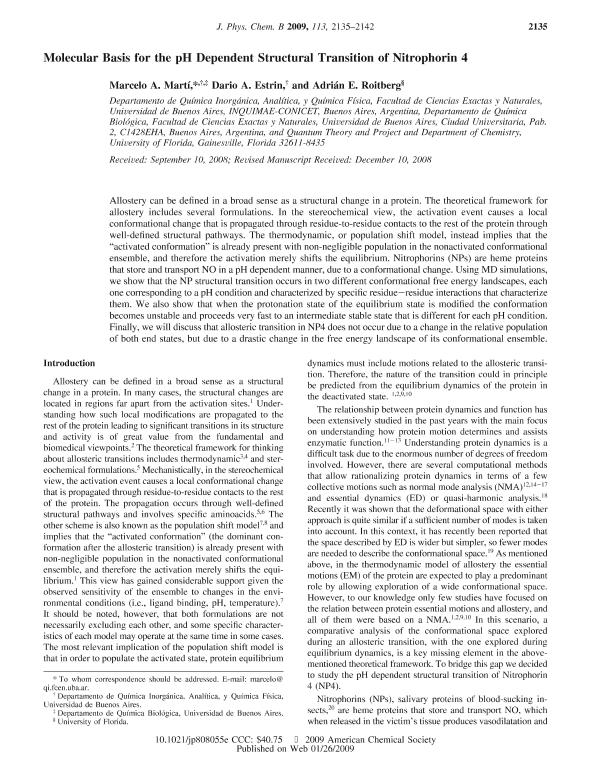Artículo
Molecular basis for the ph dependent structural transition of nitrophorin 4
Fecha de publicación:
02/2009
Editorial:
American Chemical Society
Revista:
Journal of Physical Chemistry B
ISSN:
1089-5647
Idioma:
Inglés
Tipo de recurso:
Artículo publicado
Clasificación temática:
Resumen
Allostery can be defined in a broad sense as a structural change in a protein. The theoretical framework for allostery includes several formulations. In the stereochemical view, the activation event causes a local conformational change that is propagated through residue-to-residue contacts to the rest of the protein through well-defined structural pathways. The thermodynamic, or population shift model, instead implies that the activated conformation is already present with non-negligible population in the nonactivated conformational ensemble, and therefore the activation merely shifts the equilibrium. Nitrophorins (NPs) are heme proteins that store and transport NO in a pH dependent manner, due to a conformational change. Using MD simulations, we show that the NP structural transition occurs in two different conformational free energy landscapes, each one corresponding to a pH condition and characterized by specific residue-residue interactions that characterize them. We also show that when the protonation state of the equilibrium state is modified the conformation becomes unstable and proceeds very fast to an intermediate stable state that is different for each pH condition. Finally, we will discuss that allosteric transition in NP4 does not occur due to a change in the relative population of both end states, but due to a drastic change in the free energy landscape of its conformational ensemble.
Palabras clave:
Nitrophorin
,
Qm-Mm
Archivos asociados
Licencia
Identificadores
Colecciones
Articulos(INQUIMAE)
Articulos de INST.D/QUIM FIS D/L MATERIALES MEDIOAMB Y ENERGIA
Articulos de INST.D/QUIM FIS D/L MATERIALES MEDIOAMB Y ENERGIA
Citación
Marti, Marcelo Adrian; Estrin, Dario Ariel; Roitberg, Adrián; Molecular basis for the ph dependent structural transition of nitrophorin 4; American Chemical Society; Journal of Physical Chemistry B; 113; 7; 2-2009; 2135-2142
Compartir
Altmétricas




